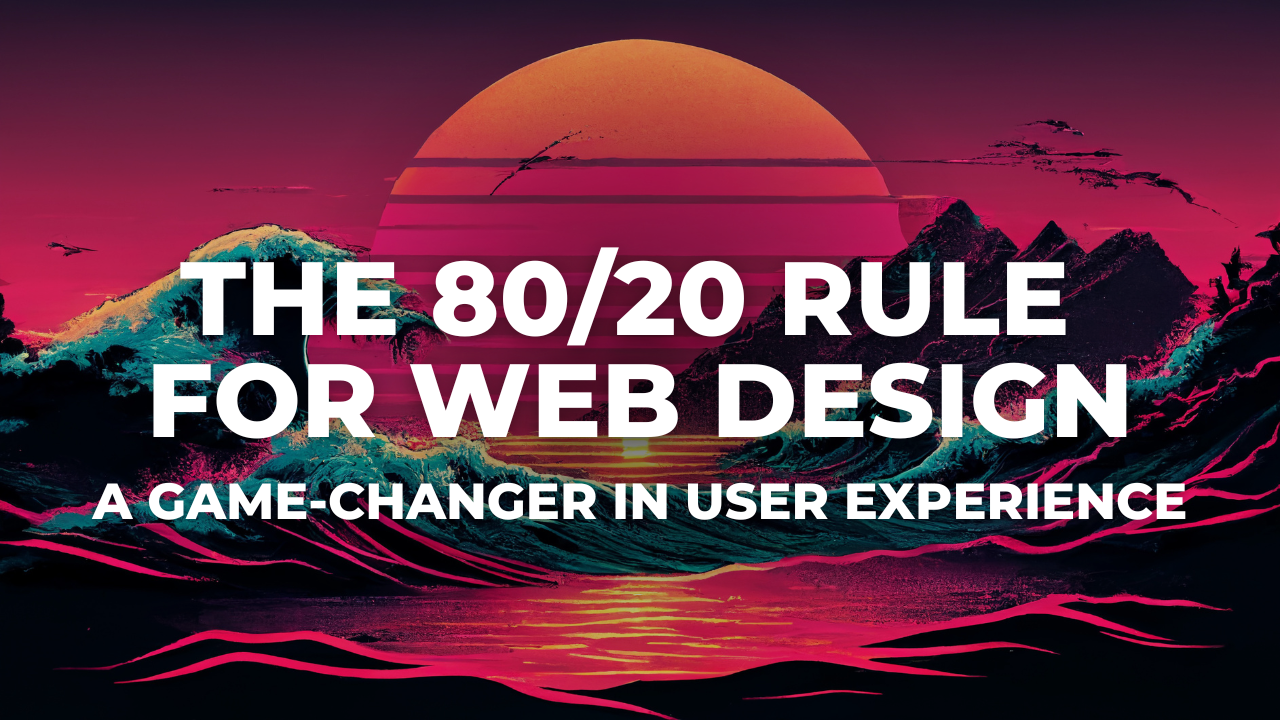The Pareto Principle, often referred to as the 80/20 rule, plays a pivotal role in shaping the user experience (UX). This principle, initially coined by economist Vilfredo Pareto, suggests that roughly 80% of outcomes result from 20% of causes. While this principle is traditionally applied to economics, it holds a profound relevance in the world of web design and development, particularly when it comes to enhancing user satisfaction and engagement.
Understanding the Pareto Principle
Before delving into the synergy between the Pareto Principle and User Experience Design, it’s crucial to comprehend the principle itself. In essence, the Pareto Principle asserts that a small fraction of inputs or efforts often yields a disproportionate share of results. This principle was initially applied to wealth distribution, where 20% of the population controlled 80% of the wealth. However, its applicability extends far beyond economics.
In the context of website design, the Pareto Principle can be translated to mean that a small portion of website elements contributes significantly to the overall user experience. Understanding and optimizing these crucial elements can lead to a more effective and engaging website.
The Pareto Principle in User Experience Design
Now, let’s explore how the Pareto Principle can be harnessed to create remarkable user experiences in website design and development.
1. Identifying the Vital 20%
In UX design, it’s essential to identify the 20% of elements that have the most significant impact on the overall user experience. These elements may include the website’s layout, navigation, content quality, and loading speed. By focusing on improving these key areas, you can enhance the overall user satisfaction.
2. Streamlining Navigation
Effective navigation is often at the core of an outstanding user experience. By employing the Pareto Principle, you can concentrate on optimizing the 20% of navigation elements that are most critical. This involves creating intuitive menus, clear call-to-action buttons, and a logical flow that guides users seamlessly through your website.
3. Content Quality Matters
Content is king, and this remains true when applying the Pareto Principle to UX design. Concentrate on the 20% of your content that generates 80% of user engagement. Ensure that this content is not only high-quality but also tailored to your target audience’s needs and preferences.
4. Mobile Optimization
In the modern digital landscape, mobile optimization is paramount. Focus your efforts on the 20% of design elements that impact mobile users the most. Responsive design, fast loading times, and mobile-friendly layouts are key aspects to consider.
The Impact on Website Development
The Pareto Principle also extends to website development, where optimizing the critical 20% can lead to substantial improvements in performance.
1. Speed Optimization
Website loading speed is a pivotal factor in user satisfaction and SEO rankings. By identifying and optimizing the 20% of elements that affect loading times the most, such as image compression and code efficiency, you can significantly enhance your website’s performance.
2. Security Measures
Website security is another area where the Pareto Principle can be applied. Concentrate on the 20% of security vulnerabilities that pose the most significant threats, and implement robust measures to protect your website and user data.
Your Competitive Edge
Applying the Pareto Principle to both UX design and website development can give your website a substantial advantage. By focusing your resources on the most impactful elements, you can create a website that not only attracts but also retains users. The Pareto Principle serves as a valuable framework for optimizing user experience design and website development. By identifying and prioritizing the vital 20%, you can create websites that excel in both functionality and user satisfaction.






0 Comments